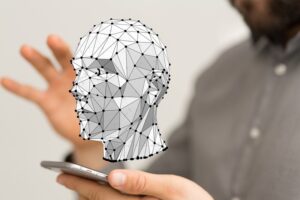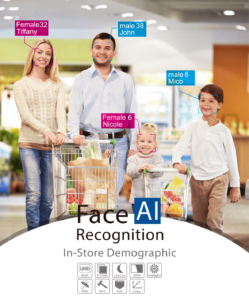
Face recognition has become more common than ever. The technology can be used for both security and non-security purposes. More and more, face recognition is moving towards the edge, where “smart” cameras embedded with face recognition capabilities are helping users achieve their various objectives.
Increasingly, face recognition is seeing more deployment among end user entities due to its effectiveness in identifying individuals, regardless of the vertical the user is in. Face recognition is the sort of basic capability that could be useful across a very broad range of vertical markets. An automatic system to recognize a person out in the world and connect them with all the other times they have appeared is quite powerful.
The primary goal for deploying face recognition is still to secure people and assets against criminals, terrorists or other unwanted individuals. Face recognition is used a lot in safe city, smart city and airports. In these environments, face recognition is frequently used for identifying blacklisted people.
Facial recognition software is making video surveillance systems highly effective in terms of minimizing the threat associated with criminal activity. It can be used to provide alerts when blacklisted people enter the building.This happened at DonauEinkaufszentrum shopping center, 70 miles north of Munich, Germany. It followed a robbery out of hours, when a cash till was stolen. Two weeks later the center’s security team was alerted by the system that the suspected robber had triggered an entrance camera and were able to apprehend him.
In fact, stopping crime is one of the main growth drivers for face recognition, which MarketsandMarket forecasted would grow from US$4 billion in 2017 to $7.8 billion by 2022, at a compound annual growth rate (CAGR) of 13.9%. “The increased need for enhanced surveillance and monitoring at public places and the increased use of facial recognition technologies in industries such as the government are expected to be driving the facial recognition market growth,” the market research firm wrote in a report. “Facial recognition technologies are used to minimize the threats associated with terrorism and border securities. The growing need for surveillance at public places is expected to be one of the major factors that drives the growth of the facial recognition market.”

More and more, face recognition is used for non-security purposes too, for example helping the end user gain better business intelligence. The recent developments in facial recognition software not only focus on the need for improved security, but also provides greater levels of insight into customer types and behavior than ever before. The use of such analytical capabilities is shaping and changing the way businesses see operations and the way they work for the better. The most popular use is within retail environments, where facial recognition technology can simultaneously be used to power marketing analysis, such as age information and gender evaluation.
Towards the edge
Typically, face recognition software is run on a server due to the amount of processing power required. But this process can be very time-consuming, expensive and difficult to meet the wide range of face recognition needs in the market. As a result, manufacturers have launched cameras with face recognition capabilities. In one example, providing a chip enables camera vendors to add human detection, face recognition, motion detection and other functions into their products.
Experts agree that running face recognition on the front end has become more and more of a trend. While there are many approaches for making networks faster and more compact, I expect you wouldn’t be able to run one on older cameras without significantly compromising accuracy or frame rate. On the other hand, cameras with specialized hardware should be able to comfortably run a strong network.
Adapted from a&s



































































